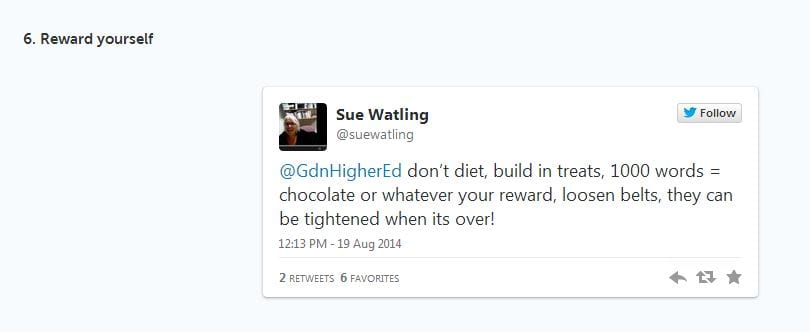

Teaching and Learning in a Digital Age is back in October. This is Part Two; a short in-service course (24 weeks, 30 M level cats, @300 learning hours). It contains two learning blocks; social media for teaching and learning and e-resources; developing and using online content.
To help prepare, I’ve been putting myself out there, so to speak, into digital space. Apart from this blog, I was a dabbler. Facebook for photos, a tweet here and there and a bit of collaborative working on Google Drive was the extent of my S&M adventures. TELEDA1 stayed within Blackboard for communication; one reason being when it comes to group work, social media can be exclusive. Not everyone wants to sign up and engage. TELEDA2 is different. It’s being advertised with the expectation colleagues will use Twitter and create a profile on LinkedIn or other ‘professional’ networking site like Academic.edu or ResearchGate. It will be a challenging e-teaching experience. I hope I’m better prepared since I took SM more seriously.
It started with BBWorld14 in July; summarised in a series of reflective blog posts* on the experience of one of the biggest education conferences in the world. Using Storify I created a synthesis of my social media usage https://storify.com/suewatling/bbworld14-sue-watling-1
During August I’ve taken Twitter seriously, with some useful outcomes. My numbers of retweets, favourites and followers have increased and my advice on surviving the write up of a PhD, begun by the Guardian Higher Education @GdnHigherEd, was included in #AcademiaObscura’s Finish That PhD in Twelve Steps https://storify.com/AcademiaObscura/finish-that-phd I’m in there at Number 6 with the meaningful advice Don’t Diet!
So what have I learned? Focusing on Twitter, where the tweet limit of 140 characters or less makes it one for the more challenging platforms, here is my top twitter-advice for anyone wanting to adopt it as a professional networking tool.
Using Twitter takes time, imagination and confidence. That’s it!
It might not sound much but the learning curve was steeper than I expected. The first thing I noticed was I could tweet from home but not the office. To start with I simply forgot. To be consistent meant a shift in on-campus working behaviours to incorporate Twitter into daily routines. It takes time to follow, retweet, say something meaningful in a sentence – this is where the imagination comes it. You need a collection of aphorisms, proverbs or even terrible puns to tweak and adapt if you want to get noticed and confidence is required in buckets. It might just be me but linking to other people – like cold connecting – still feels a bit like gatecrashing. The internet is a mirror and using social media reflects your professional online identity. To be a non-user is to be invisible and risks exclusion in an increasingly digital society. It’s best to take control of the medium before it takes control of you. Benefits include discovery and connections which can be really useful. Ultimately social media is like the Lottery, you have to be in it to win it!
I can’t wait to get started with TELEDA2 🙂
* Blog posts from July synthesising my social media adventures.
- https://suewatling.blogs.lincoln.ac.uk/2014/07/30/synthesising-teleda-seven-top-tips-for-e-teaching-and-final-bbworld14-reflections/
- https://suewatling.blogs.lincoln.ac.uk/2014/07/29/the-ees-have-it-examining-e-teaching-as-essential-element-of-e-learning/
- https://suewatling.blogs.lincoln.ac.uk/2014/07/27/taking-neil-selwyns-new-book-distrusting-educational-technology-to-bbworld14/
- https://suewatling.blogs.lincoln.ac.uk/2014/07/25/bbworld14-re-imagining-education-and-the-importance-of-presentation-titles/
- https://suewatling.blogs.lincoln.ac.uk/2014/07/25/social-media-selfies-from-bbworld14-the-moral-of-storify-is-think-before-you-link/